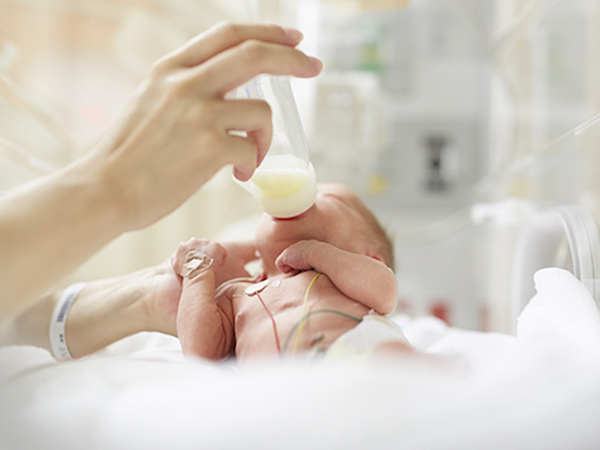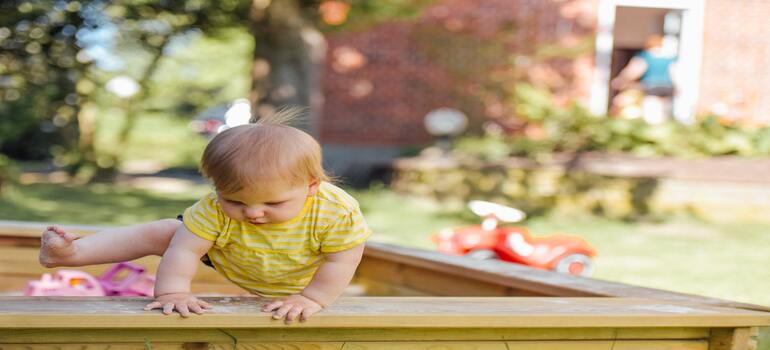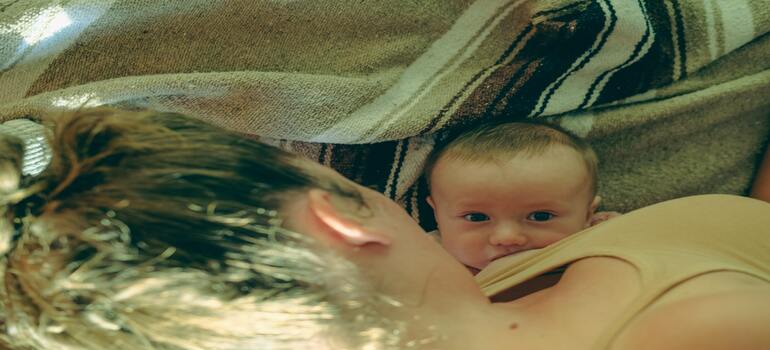Donating extra milk? How & Why?

- March 22, 2021
- MKB Team
Donating Extra Breast Milk
Breastfeeding is not only best for the baby, but when a mother breastfeeds, it strengthens the bond between mother and baby even further.
All new mothers want to breastfeed their baby, but unfortunately not all are blessed with the opportunity due to many issues. That’s where milk donation comes into play in the form of a Human Milk Bank.
What is a Human Milk Bank?
A human milk bank is nothing but a service associated with hospitals or nursing homes. Here, breast milk is collected from healthy, lactating mothers, screened and stored to meet the growing nutritional requirements of babies whose mothers cannot breastfeed because of some reason. This milk is also called ‘liquid gold’, owing to the essential nutrients it has that’s needed for baby’s healthy growth and development.
The Donation Process
To become a breast milk donor and donating the milk requires going through a detailed process which takes a time period of 3-4 weeks. Here are the 6 steps of the process.
- Checking for excess Milk
The first and most important thing for a prospective donor is to ensure that she has enough milk to breastfeed her own baby first. Only after ensuring that her own baby is full fed, can she donate her excess milk. One can donate newly pumped breast milk or frozen milk that has been collected previously (this has to be up to 10 months of the date of pumping). The day, month and year of collection has to be marked clearly.
- Applying online and being reviewed
Normally, a prospective breast milk donor has to fill out an application form that also includes a ‘medical history survey form’ and ‘consent to donate form’. This varies from bank to bank of course. The first form contains questions like any previous history of a disease, accidents, and other details. The second form obviously expresses a donor’s willingness to donate. Your application will then be processed, and this takes about 5 days, after which the Human Milk Bank will get in touch with you.
- Getting medical confirmation forms
The third step in the procedure involves getting a medical confirmation form signed by your doctor and your baby’s paediatrician to qualify as a breast milk donor. This is because your breast milk can be used for premature as well as seriously ill babies. It is also a quality check of your breast milk and to confirm that both you and your baby are healthy so that your breast milk can be donated.
- Testing of breast milk donor
The next step is the most important step as it certifies the safety of the breast milk that has been donated. It involves a screening blood test at the laboratory. A cheek swab also has to be given to create a DNA profile. This is done to match the DNA in the donated milk against the DNA of the donor to ensure that proper screening has happened.
- Labelling and record-keeping
The Human Milk Bank gives the donor detailed human milk bank storage instructions, along with instructions on how to collect the breast milk. Breast milk storage bags will also be provided for the donor. Once the application is qualified, the donor has to fill, freeze, pack and label the donation, and send it to the respective bank.
- Receipt of Milk at the bank
In the sixth and last step, the donated milk is received at the bank where it undergoes tests before it is finally diagnosed as safe as a life-saving option for critically ill infants.
Where to donate breast milk?
Make sure you donate your excess breast milk to authorized and regulated human milk banks only. This means an accredited Human Milk Bank. They will pasteurize the milk to keep it safe for babies and ensure that it reaches babies who need it.
Babies in need of mother’s milk can benefit by donation. Donated breast milk can be life-saving for babies who are critically ill as well as provide the much needed nourishment for babies who have mothers who cannot breastfeed them. Plus, babies get milk with more fat while breastfeeding. Basically, there are two types of milk a baby gets while breastfeeding. Fore milk refers to the milk he/she drinks in the beginning. This has high lactose content but low-fat content. As the baby continues feeding, richer, creamier milk called hind milk becomes available. This has a higher fat content and is more filling.
As a donor, although you may not know the baby who ultimately gets to drink your breast milk, the fact that you have helped an infant grow stronger and stay healthy is such a wonderful feeling, isn’t it?
Was this article helpful for you? Write in to us with your tips, suggestions and questions. We will be happy to address them.
Q&A
You ask and we answer!
What should be done with any leftover breast milk?
C.S. Sitalakshmi, Chennai.
The same goes for breast milk. If after feeding your baby, you're left with half or a quarter of a bottle, put it in the fridge and offer it again at the next feeding, but that's it. "Used" breast milk can become contaminated, since bacteria from the baby's mouth can get into the bottle while your baby sucks.
Is using donor milk safe?
Sharon Silgardo, Navi Mumbai
They are non-profit; milk is donated, and donors are not paid. The donors are strictly screened and tested for diseases such as HIV or Hepatitis B and C – any blood-borne disease. The milk is handled hygienically and pasteurized, killing all known pathogens in breast milk. Donor milk from an accredited Human Milk Bank is safe.
Why is donor milk so expensive?
Priya Kalra, Johannesburg.
Costs of some research are paid for by researchers' budgets. Individual milk banks frequently cover the costs of research directly related to donor milk screening, pasteurization and safety measures. These costs often involve staff time and milk testing and can be expensive.
Published by
MKB Team
200 Articles
MomsKnowBest is a fast-growing vibrant community of moms, for moms, by moms. Motherhood is complex fun, fulfilling, grueling, exhausting and very complex. There’s no handbook to it. And let’s face it – moms are put...
Read MoreShare with your friends!
Leave a Comment
Trending Post
Myth Buster: Having iron tablets makes your child...
Busting Top 10 Pregnancy Myths about having Iron Tablets
One of the Top 10 pregnancy myths is that...
Health Benefits of Pomelo For Moms To-Be & Kids
During pregnancy, women need proper nutrition to support their health as well as the growth of the...



